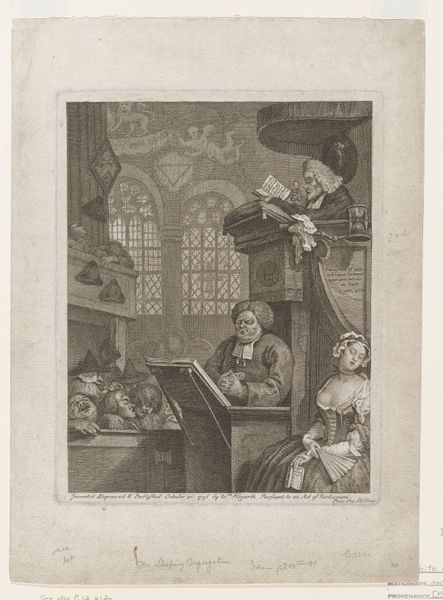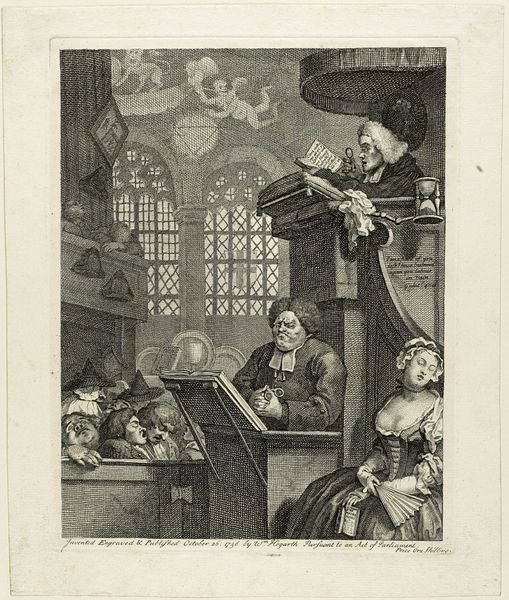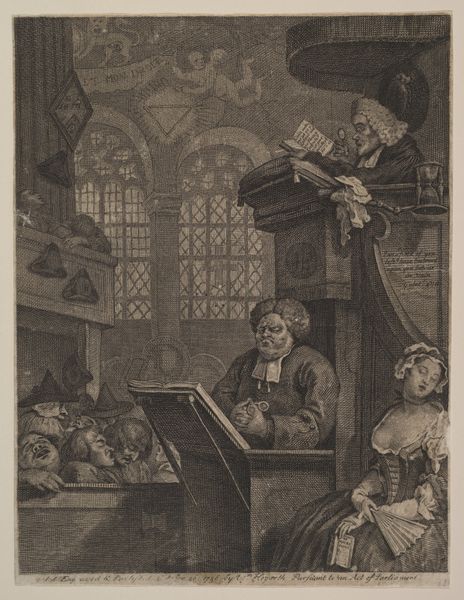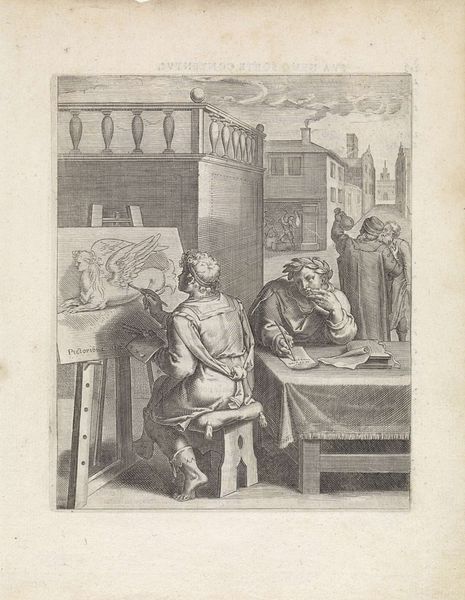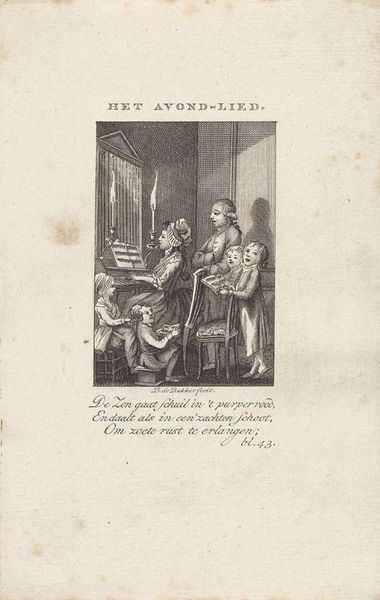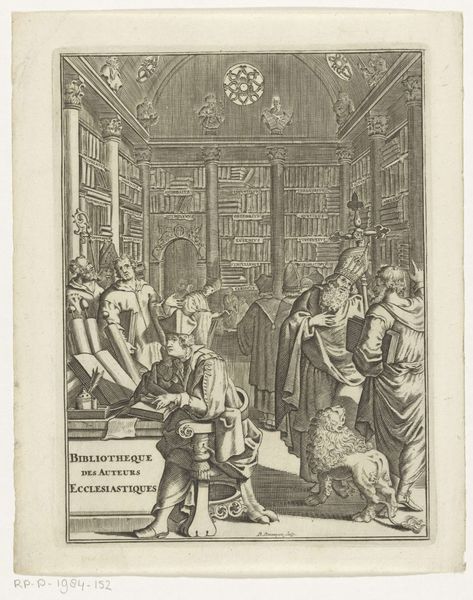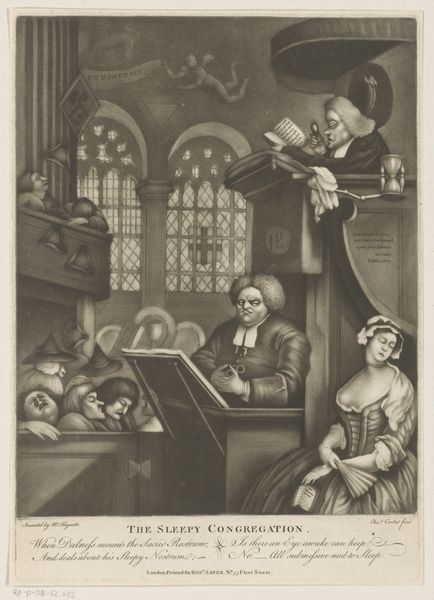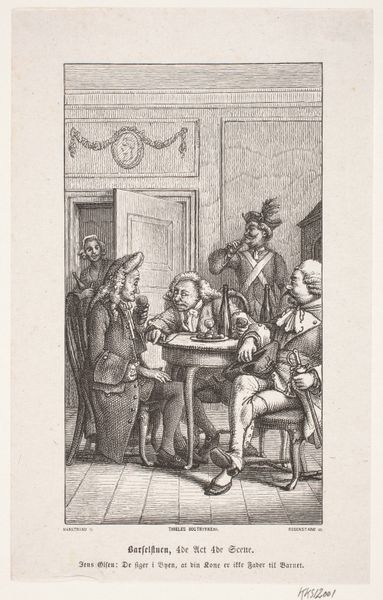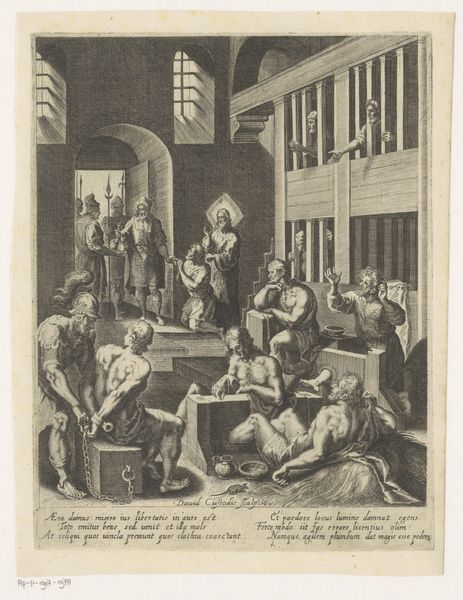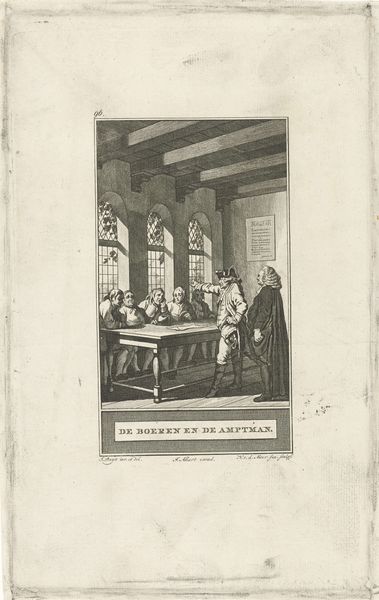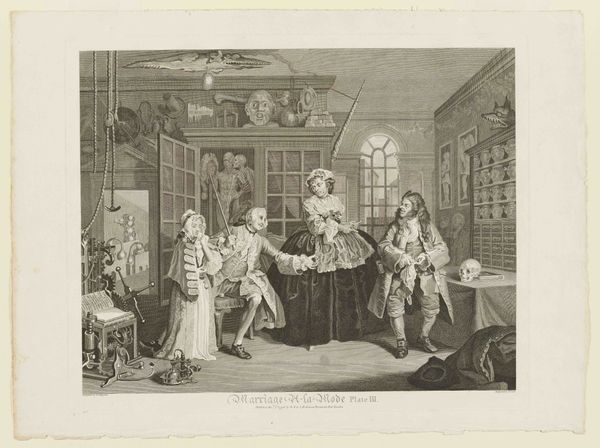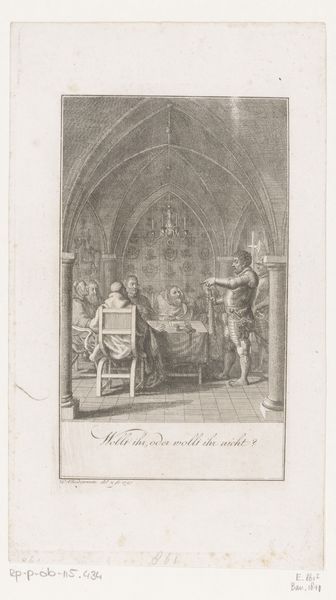
print, etching
#
baroque
# print
#
etching
#
caricature
#
england
#
genre-painting
#
history-painting
#
northern-renaissance
Copyright: Public Domain
Curator: Ah yes, William Hogarth's "The Sleeping Congregation," an etching from 1736. It’s a rather biting social commentary. What strikes you about it initially? Editor: It definitely has a sardonic feel. It looks like everyone's utterly bored during the sermon. I’m interested in the level of detail he achieved with etching; what does the work say about the production and consumption of images at the time? Curator: Precisely! Consider the material conditions: etching allowed for relatively inexpensive reproduction. How did that access change who could engage with images and ideas? This print form meant that Hogarth's social critiques, cleverly embedded in the scene, could reach a broad audience beyond the traditional art world. What about the material itself-- why etching, what possibilities did this afford to the artist? Editor: So, the medium itself became a tool for democratization of commentary? The etching allows for incredible detail and the marks appear rather quickly done, like a kind of rapid capture... Curator: Absolutely. Think about the labour involved, the accessibility of the materials. These prints became commodities, subject to market forces. How does that shift our understanding of art, moving away from unique handcrafted objects for the elite? Do you see any other signs of commodity or labour relations here? Editor: The people in the pews—their clothing, and affect-- also suggests the scene represents a spectrum of society, or perhaps distinct social roles within the congregation as a unit of economic production? Curator: Precisely. The print culture meant wider access and participation. Instead of pure representation of a biblical story, it shows the daily routines, and thus labour relations. The art challenges its status in society! Editor: This really shifts how I see the work – it's not just mocking the church; it's questioning art's role within social structures. Thanks, that's insightful! Curator: Indeed! Examining materiality offers potent means to re-evaluate both artistic creation and consumption.
Comments
minneapolisinstituteofart about 2 years ago
⋮
Human weakness was an endless source of humor for Hogarth, and his pointed satires sought to draw lessons through full disclosure of people's failings. Here religion-a frequent target of caricature-takes a backseat to more basic needs; sleep and sex, not piety, captivate the faithful during Sunday services. A shortsighted old preacher clutches his magnifying glass as he delivers what is surely a long-winded and dull sermon. Meanwhile, the undignified congregants appear in different stages of slumber, and a portly clerk sneaks an amorous glance at the bosom of a young maiden who sleeps, her dream colored by her biblical reading "on matrimony." Hogarth was a master storyteller, incisively capturing the characters and customs of his time in amusing narratives.
Join the conversation
Join millions of artists and users on Artera today and experience the ultimate creative platform.
